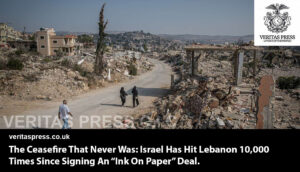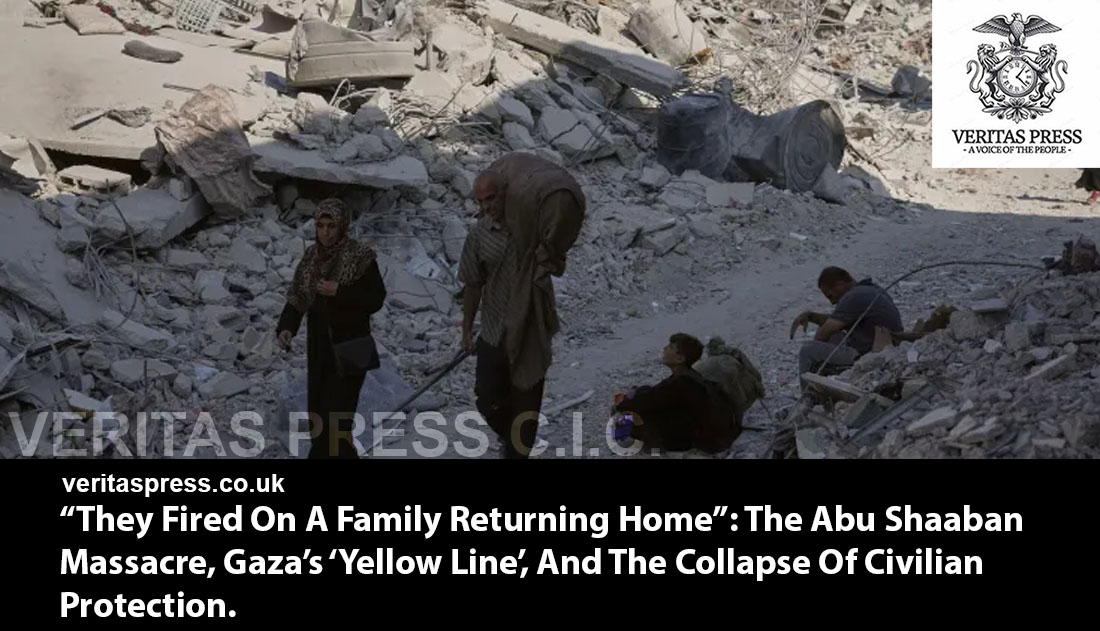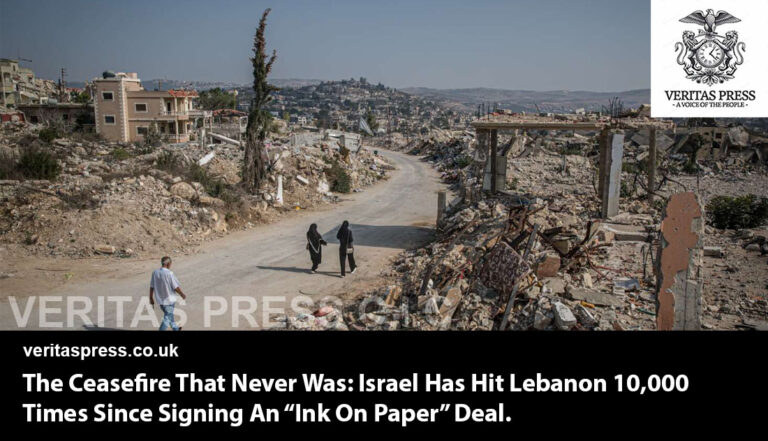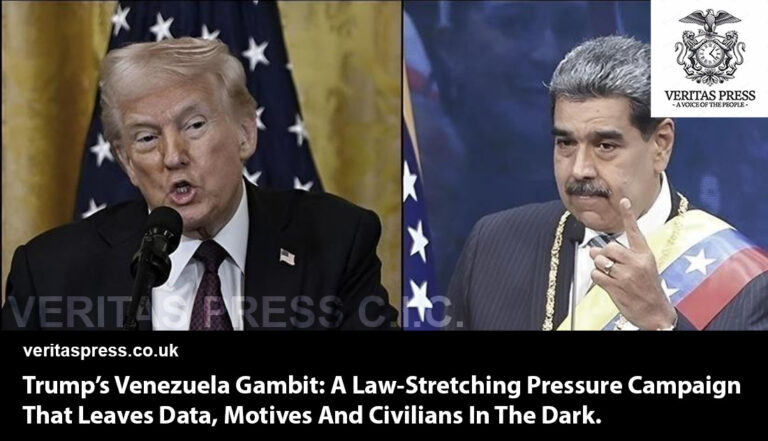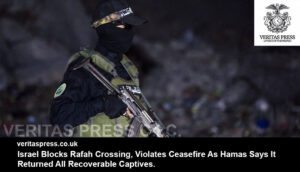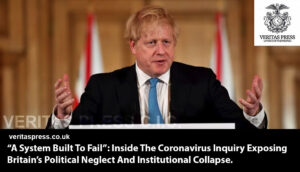Press Release: Veritas Press C.I.C.
Author: Kamran Faqir
Article Date Published: 18 Oct 2025 at 12:02 GMT
Category: Middle-East | Palestine-Gaza-West Bank |
Source(s): Veritas Press C.I.C. | Multi News Agencies

Business Ads


GAZA – 17–18 October 2025, In Gaza’s Zaytoun neighbourhood, where the smell of dust and blood has become as common as the sea breeze, an entire Palestinian family was obliterated in an instant. 11 members of the Abu Shaaban family, 7 children, 2 women, and 2 men, were killed when an Israeli drone struck their vehicle without warning, moments after it crossed what Israeli authorities call the “yellow line.” There were no militants, no weapons, only civilians trying to return to what remained of their home.
The attack came less than a week after a U.S.-imposed ceasefire took effect, a deal heralded by Washington as the “first step toward stability.” Yet within days, Israel had resumed artillery shelling, drone fire, and “targeted strikes” across Gaza, actions that rights groups say amount to systematic violations of the truce. The massacre of the Abu Shaaban family has become its most haunting symbol.
According to Gaza’s Civil Defence spokesperson, Mahmoud Basal, the vehicle was carrying displaced relatives attempting to inspect their destroyed home when it was hit. “The family could have been warned or dealt with in a way that did not lead to murder,” Basal said. “What happened confirms that the occupation remains thirsty for blood.”
Hamas called the strike “a premeditated massacre,” accusing Israel of deliberately targeting civilians in defiance of the ceasefire. The movement urged U.S. President Donald Trump and international mediators to hold Israel accountable for the attack and for what it described as “systematic war crimes and genocide” against the people of Gaza.
Since October 2023, Israel’s bombardment has killed more than 100,000 Palestinians and wounded and maimed over 377,000, the majority women and children. Gaza’s health system has collapsed, famine has claimed hundreds of lives, and families continue to dig through rubble with their bare hands. Even in supposed “safe zones,” Israeli strikes persist, often justified through opaque military language that conceals the reality of civilian slaughter.
Eyewitnesses in Zaytoun told Al Jazeera that Israeli drones had hovered for hours before firing on the Abu Shaaban vehicle. “We heard one explosion, then another; there were no warnings, no leaflets, no escape,” said a neighbour. “When we reached the car, there was nothing left to recognise them.” Doctors at Al-Quds Hospital described receiving “dismembered remains of children,” calling it “one of the worst massacres since the ceasefire.”
As humanitarian agencies scramble to deliver limited aid under Israeli restrictions, international outrage has yet to translate into accountability. “This is a clear violation of the ceasefire,” said Chris Doyle, director of the Council for Arab-British Understanding (Caabu). “It demonstrates that Israel continues to operate with total impunity; there is no oversight, no justice, and no real will among Western powers to enforce the rules they claim to uphold.”
The killing of the Abu Shaaban family is not an isolated event. It is the latest episode in a relentless pattern of ceasefire violations, civilian massacres, and international paralysis, where the rhetoric of peace coexists with the reality of genocide. The rubble of Zaytoun, and the silence that follows each new airstrike, tell a story that diplomacy refuses to hear: Gaza’s civilians are still dying, and no ceasefire imposed from above will stop the killing until the world decides to hold Israel accountable.
What Happened, The Facts On The Ground:
- Gaza Civil Defence spokesman Mahmoud Basal told local media the vehicle was carrying 11 members of the Abu Shaaban family, including seven children and two women, when it was struck “without warning” in Zaytoun as the family tried to return to or inspect their home. Gaza authorities say the hit came shortly after the vehicle crossed the “yellow line.”
- Al Jazeera’s live reporting described the strike as the deadliest single violation of the eight-day ceasefire up to that moment; other outlets (Anadolu, Middle East Monitor, Palestine Chronicle) echoed the Civil Defence account.
- U.S. envoy Steve Witkoff was reported to be travelling to the region to follow up on the ceasefire and reconstruction package, a visit that immediately faced the test of implementing civilian safeguards after this breach.
Load-bearing evidentiary points to verify (and demand from Israeli authorities):
- surveillance / targeting footage or sensor logs showing the vehicle’s identification as a military target (if that is Israel’s claim);
- evidence of any prior warnings given to the family (audio, radio broadcasts, leaflets, loudspeaker warnings);
- chain of command authorisations for engagement at that time and location;
- post-strike munition forensics and independent forensic imagery.
No public evidence of those items has been presented at the time of reporting; their absence is central to the legal and investigative critique.
Eyewitnesses, Doctors And On-The-Ground Testimony:
- Local journalists and Gaza field teams reporting from Zaytoun described residents returning to formerly evacuated homes and moving through rubble and booby-trapped properties. Multiple reports stress that many civilians do not know exactly where the “yellow line” runs; they lack internet, phones or clear physical demarcation, increasing the likelihood of accidental crossings.
- Medical staff and the Civil Defence emphasise the horrific burden on emergency services: hospitals remain crippled (only a fraction functioning), ambulances face dangers clearing rubble and treating blast and burn injuries, and morgues are overwhelmed. The UN and WHO have repeatedly warned that health infrastructure collapse is producing spiralling infectious disease and famine risks.
“They could have been warned or dealt with in a way that did not lead to murder,” Civil Defence spokesman Mahmoud Basal said. That statement is not just rhetorical; it is a direct claim that possible alternative procedures (warnings, non-lethal interdiction, arrest) were available but not used.
Where direct, named eyewitness quotes specific to the Abu Shaaban vehicle are still limited in international copy, local social channels and Gaza networks circulated grieving family lists and images. These must be treated cautiously but cannot be dismissed: they are the primary records of civilian suffering in a context where independent access is restricted.
The “Yellow Line”: A Protective Measure Or An Illusory Lethal Boundary?
The ceasefire created new deployment lines inside Gaza intended to reduce contact between Israeli forces and the population. In practice:
- Israeli authorities have signalled that forces will use force against those approaching or crossing these lines; critics call the yellow line a de-facto “kill line.” Chris Doyle (director of Caabu) told The Guardian that the Abu Shaaban killing “highlights that Israel is still prepared to use all force necessary… the yellow line … is a kill line.” He added that Israeli claims (such as that an attack tunnel or hostile intent justified the strike) need to be backed by transparent evidence; absent that, questions about unlawful use of lethal force persist.
Problems With The Yellow Line In Practice:
- It is imaginary (not visible to displaced civilians),
- Many civilians lack communication to receive warnings or updates,
- Marking or publicising the lines has been inadequate so far, and
- Enforcement has been lethal and opaque rather than protective.
The combination of those factors turns a “safety” demarcation into a trap for displaced populations trying to return home.
Legal Framework, Why Does This Demand An Independent Probe:
Under international humanitarian law, the relevant tests are distinction, proportionality, precautions in attack, and warnings:
- Distinction: Did the attackers reasonably believe the vehicle and its occupants were combatants or directly participating in hostilities? If not, the attack on a civilian vehicle is unlawful.
- Proportionality: even if a target has military value, could the expected civilian harm (11 family members killed, seven children) have been excessive compared with the military advantage?
- Precautions & warnings: if feasible, warnings should be given before strikes on populated areas; Basal’s claim that the family could have been warned raises red flags about compliance with the duty to minimise civilian harm.
- Command responsibility: without transparent and independent investigations into orders, rules of engagement, and post-strike reviews, systemic impunity remains likely.
Human-rights monitors have previously documented patterns of operations in Gaza that raise concern about indiscriminate or disproportionate attacks; Human Rights Watch and others have argued for independent investigations when civilian death tolls are high and evidence from the attacking force is lacking. The UN has also mounted inquiries which, in recent months, produced extremely serious findings about the broader conduct of the war. These precedents make an independent, international forensic inquiry an urgent necessity here.
Political Reactions And Accountability Pressure:
- Hamas labelled the strike a “premeditated crime” and urged U.S. President Donald Trump, mediators and international bodies to hold Israel to account.
- Washington has signalled continued involvement: envoy Steve Witkoff is due to visit the region to help oversee the ceasefire’s implementation and reconstruction efforts, but the Abu Shaaban killings will test Washington’s leverage and credibility if it does not press for a transparent inquiry. Reporters note Witkoff’s upcoming trip and the immediate pressure it places on diplomats.
- NGOs, legal advocacy groups, and human-rights organisations have been increasingly vocal: calls for independent investigation, arms-transfer reviews, and prosecutorial steps at international tribunals have multiplied as evidence of mass civilian harm accumulates. The UN humanitarian leadership has described Gaza’s destruction as “beyond belief” and estimated reconstruction needs at roughly $70 billion, underscoring the scale of the crisis that accountability mechanisms must address.
Why This Incident Matters Beyond A Single Family:
- Tactical rules converted into lethal policy — The yellow line is meant to reduce friction, but without clear demarcation and safeguards, it becomes an arbitrary boundary where lethal force is authorised by default. That converts return-home movements into life-or-death calculations for civilians.
- Information asymmetry — Many Gazans have no internet, few phones, and limited access to broadcasts; warning regimes that rely on technology therefore fail the most vulnerable.
- Lack of independent oversight — Recurrent strikes against returning civilians have a pattern that only an independent, well-resourced probe can examine, including munition forensics, witness interviews, medical records and imagery analysis. Analysts note that without such oversight, incidents will continue unchecked.
- Humanitarian consequences — beyond immediate deaths, such killings deter displaced people from returning to cultivate land, rebuild homes or engage with aid distribution, exacerbating famine, disease and long-term displacement. The UN and WFP warn that current aid flows remain insufficient to avert mass malnutrition and disease outbreaks.
What A Credible Investigation Must Do (Practical Steps):
- Secure and publish targeting data (sensor and video logs), chain-of-command orders and warnings communications.
- Carry out on-site forensic analysis of the munition, crater, shrapnel and vehicle damage by an agreed independent team (UN/ICRC/forensic NGOs).
- Collect medical records, autopsy reports and witness interviews (with protections for witnesses).
- Cross-check Israeli operational claims (e.g., an alleged tunnel/attack attempt) with open-source imagery and independent on-the-ground testimony.
- Refer findings publicly, where war crimes or crimes against humanity are identified, to impartial prosecutorial fora (domestic or international).
These steps are standard forensic and legal practice in complex armed conflicts and are the minimum needed to move beyond competing claims and emotional exchange.
Voices From Analysts And Relief Actors:
- Chris Doyle (Caabu): “It highlights that Israel is still prepared to use all force necessary… the yellow line … is a kill line.” He warned that without transparent evidence, the Israeli account will struggle to convince outside observers.
- UN humanitarian officials (Tom Fletcher / UN OCHA and other briefings) have repeatedly warned that reconstruction and humanitarian relief require secure, reliable access and civilian protection; they describe the physical destruction as “almost beyond comprehension.” The Abu Shaaban killings demonstrate why security guarantees and accountability must be practical, not theoretical.
- WFP / aid agencies: have said current aid volumes (some hundreds of tonnes daily) are well short of need and that ongoing killings and restrictions make distribution perilous. The political promise of a reconstruction package (and the $70bn estimate) will be hollow without protection for civilians and transparent investigations into alleged crimes.
Conclusion: Pattern, Not Anomaly:
The annihilation of the Abu Shaaban family in Gaza’s Zaytoun neighbourhood is not an isolated “error” of war but a chilling manifestation of a systematic campaign of extermination against a besieged civilian population. Eleven members of one family, three generations, were wiped out in seconds, their home reduced to dust and bone. This was not a moment of chaos but a deliberate act of violence carried out in direct violation of the US-brokered ceasefire agreement imposed last week, which required Israel to “immediately end all military operations, including aerial and artillery bombardment.”
The killing of 11 members of the Abu Shaaban family is not just an isolated tragedy: it is emblematic of how ceasefire demarcations, information failures, and scant oversight can produce repeated mass civilian harm. The so-called “yellow line,” which Israel claims demarcates areas under its control, has instead become a kill line, where displaced Palestinians, unaware of its location, lacking phones, maps, or communication, are executed without warning.
Doctors at Gaza’s Al-Quds Hospital told Al Jazeera that they received “nothing but pieces of bodies,” describing the aftermath as “a massacre of civilians, not a strike on fighters.” Eyewitnesses and neighbours confirmed that “there were no militants, no weapons, only families hiding together.” Mahmoud Basal, the Civil Defence spokesperson, condemned the attack, saying the family “could have been warned or dealt with in a way that did not lead to murder.” The Palestinian Centre for Human Rights (PCHR) denounced the strike as “part of Israel’s deliberate policy of collective punishment and population annihilation,” calling for urgent international criminal investigations. Amnesty International’s regional director, Heba Morayef, warned that “Israel’s repeated targeting of civilian homes without military necessity constitutes a war crime under international law.” Even UN officials have privately acknowledged that “the scale of family extermination in Gaza is unprecedented in modern conflict.”
The killing of the Abu Shaaban family also exposes the fragility and failure of the ceasefire framework itself, revealing that the so-called truce functions as a rhetorical shield rather than a genuine mechanism for civilian protection. Israel’s continued strikes, artillery shelling, and restrictions on aid entry have rendered the ceasefire meaningless, while the United States, its chief guarantor, has shown neither the will nor the moral courage to enforce it.
Yet despite overwhelming evidence, accountability remains elusive. Western governments continue to arm Israel, offer political cover, and speak of “self-defence” while civilians are buried beneath their homes. The international community’s moral paralysis has become indistinguishable from complicity. As Gaza’s doctors, journalists, and rescue workers risk and often lose their lives documenting these atrocities, the systems meant to protect them collapse under geopolitical convenience.
The responsibility to investigate and to publish the underlying evidence should not be optional. If governments and international institutions genuinely seek a durable cessation of hostilities and a credible reconstruction process, they must demand and enforce independent, transparent investigations into incidents like this one, press for robust civilian-protection measures (clear marking of lines, guaranteed communications, safe return corridors), and attach real consequences to continued lethal impunity. Anything less is not diplomacy, it is complicity.
What unfolded in Zaytoun was not a battlefield engagement; it was an act of annihilation carried out in full view of the world. The absence of justice for the Abu Shaaban family, and thousands like them, marks not only a failure of law but a betrayal of humanity itself. Until there is accountability, the rubble of Gaza will remain a monument to global hypocrisy, and every new strike will echo the same unanswered questions:
- How many more families must be erased before the world says enough?
- How many more massacres will be dismissed as “errors” before the international system confronts the deliberate machinery of extermination at work in Gaza?
- When will the world stop arming Israel, and admit that its silence, its impunity, and its complacency are the bloodiest weapons of all?
Advertisements
Tags:
Related Articles
Read more related articles below.
-
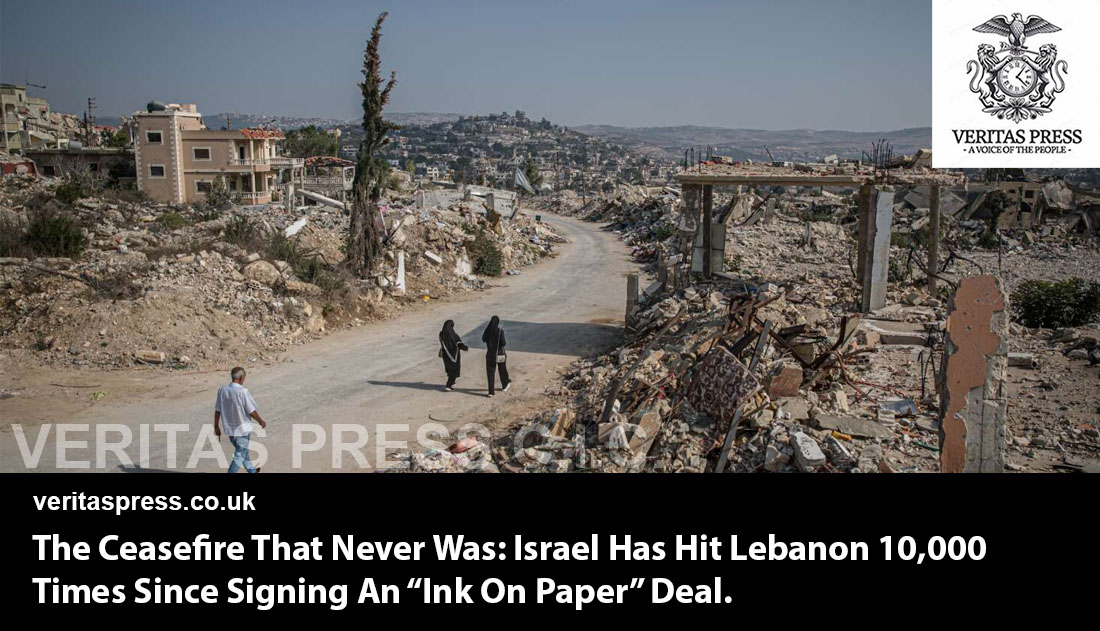
The Ceasefire That Never Was: Israel Has Hit Lebanon 10,000 Times Since Signing An “Ink On Paper” Deal.
One year after the November 27, 2024, ceasefire between Israel and Hezbollah, the agreement’s…
-

New Study Shows Rheumatoid Arthritis Begins Long Before Symptoms.
Scientists discovered dramatic immune changes occurring years before rheumatoid arthritis symptoms appear.
-

A Chilling Experiment Near Absolute Zero Finds Hints Of Dark Matter.
Physicists have achieved record-breaking sensitivity in detecting the faintest traces of light dark matter…


